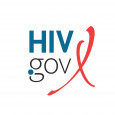This post is from Francisco Ruiz, MS, Director, Office of National AIDS Policy, The White House.
On December 1, the world will gather to commemorate World AIDS Day. This annual event serves as an important reminder that we must remain steadfast in our commitment to prevent new HIV infections and provide essential services to all people living with HIV globally. In 2024, we will commemorate the 37th World AIDS Day with the theme, “Collective Action: Sustain and Accelerate HIV Progress.”
This theme encapsulates the U.S. government’s dedication to harnessing the significant progress that has been made through global and domestic HIV programs over the last four-plus decades, working to ensure that no communities are left behind. At the same time, we continue to innovate and adapt initiatives based on new scientific advancements, implementation research, and lessons learned from programs in the field.
Examples of this include the President’s Emergency Plan for AIDS Relief’s (PEPFAR) new Action Plan to Address HIV- Service Equity Gaps for Key Populations; the rollout of long-acting, injectable PrEP in the United States and around the world; and a growing focus on addressing structural barriers that impede individuals’ ability to access HIV testing, prevention tools, and treatment in the United States, such as lack of housing and mental health and substance use disorders services.
This summer at the International AIDS Conference (AIDS 2024), we heard very promising results of the PURPOSE 1 study, confirming that twice-yearly injectable lenacapavir is effective in HIV prevention for women and new evidence on the safety of long-acting cabotegravir for HIV prevention in pregnancy. We were thrilled when the results of the PURPOSE 2 research study provided confirmation of lenacapavir’s efficacy and safety for cisgender men, transgender men, transgender women, and gender non-binary individuals who have sex with partners assigned male at birth. The findings indicated its superiority to a daily PrEP pill. The community of researchers, people with lived experience, frontline health workers, and other partners experienced a collective sense of hope and determination that together, we can end HIV/AIDS as a public health threat. However, there was also a tremendous sense of urgency that without an acceleration of our collective efforts and resources, we would jeopardize our gains in the HIV response.
We must continue to remind everyone that HIV remains an urgent health security issue that starts with listening to and centering those with HIV and expanding our partners in the response.
“Together, we can achieve the UNAIDS 95-95-95 HIV testing, treatment, and viral suppression targets,” Ambassador Dr. John Nkengasong, U.S. Global AIDS Coordinator and Senior Bureau Official for Global Health Security and Diplomacy, said, adding, “To accelerate progress to achieve these targets, we must sustain the gains PEPFAR already has made in the last 21 years in providing lifesaving treatment and preventing HIV infections around the world while continuing to foster the transformative partnerships and shared responsibility for collective action.”
Reinforcing our theme for World AIDS Day, Admiral Rachel L. Levine, MD, Assistant Secretary for Health at the U.S. Department of Health and Human Services noted, “We must all come together to remember the millions of people we have lost to HIV/AIDS. In their memory, we know we must take collective action to continually improve, resource, and further the reach of programs to the communities most and disproportionately impacted by HIV.”
We are stronger together, and we must sustain and accelerate our efforts to address HIV and its co-occurring conditions, such as syphilis and other sexually transmitted infections, mpox, mental health and substance use disorders, and hepatitis. The progress we have achieved thus far is a testament to the power of community action. Governments, communities, civil society, advocates, faith-based communities, and public and private organizations have all played crucial roles in our shared goal to save lives, challenge stigma and discrimination, and change the course of the HIV pandemic.
The federal government continues to work with communities and people with lived experience to enhance funding and research opportunities, implement best practices, and address barriers and gaps. Through this approach, PEPFAR has saved more than 25 million lives and enabled more than 5.5 million babies to be born HIV-free across 55 countries around the world since its inception in 2003. In fiscal year 2023, PEPFAR supported nearly 20.5 million people on lifesaving treatment and enrolled nearly 2 million people on PrEP.
Here in the U.S., HIV incidence among people ages 13 and older has declined 21% in jurisdictions receiving Ending the HIV Epidemic in the U.S. (EHE) initiative funding, as compared to 12% in the nation overall. EHE has saved over $5.1 billion in lifetime medical costs due to the 9,500 fewer HIV infections in EHE jurisdictions in 2022 compared to 2017.
The White House Office of National AIDS Policy has held several convenings to raise awareness about HIV, including last week’s ¡Adelante! Summit and the Rising Leaders’ Summit, which brought together early career professionals from diverse backgrounds—across race and ethnicity, sexual orientation, gender identity, academic disciplines, and geography. These combined efforts continue to push our work forward. The Biden-Harris Administration also remains dedicated to ongoing implementation of the National HIV/AIDS Strategy utilizing a whole-of-government approach.
On this World AIDS Day, let us renew our commitment to united action. Let us honor the lives lost, celebrate the progress made, and work tirelessly to ensure a future free from HIV. Together, we are stronger and, together, we will succeed. We know that only by working collaboratively with communities most affected, researchers, healthcare providers, and other partners can our government be successful in ending the pandemic and ensuring a sustained response to HIV.
This blog post was published on HIV.gov.








Comments
Comments